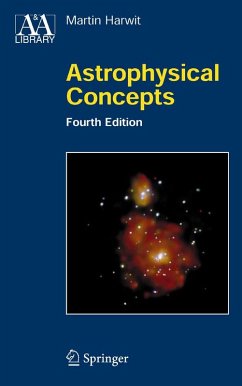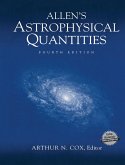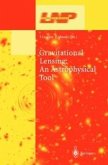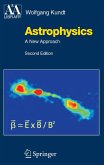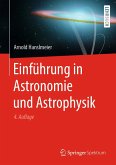This classic text, aimed at senior undergraduates and beginning graduate students in physics and astronomy, presents a wide range of astrophysical concepts in sufficient depth to give the reader a quantitative understanding of the subject. Emphasizing physical concepts, the book outlines cosmic events but does not portray them in detail: it provides a series of astrophysical sketches. For this fourth edition, nearly every part of the text has been reconsidered and rewritten, new sections have been added to cover recent developments, and others have been extensively revised and brought up to date.
The book begins with an outline of the scope of modern astrophysics and enumerates some of the outstanding problems faced in the field today. The basic physics needed to tackle these questions are developed in the next few chapters using specific astronomical processes as examples. The second half of the book enlarges on these topics and shows how we can obtain quantitative insight into the structure and evolution of stars, the dynamics of cosmic gases, the large-scale behavior of the Universe, and the origins of life.
A major aim of Astrophysical Concepts, 4E is to help the reader gain physical insight. While mathematics provides an essential basis for any quantitative treatment of astrophysics, the book consistently emphasizes the physical meaning of equations and mathematical terms. With this approach, individual astronomical objects (white dwarfs, supernovae, comets, quasars) are mentioned wherever physical processes relevant to them are discussed, rather than in specifically dedicated sections. To balance this approach, an appendix presents a coherent outline of astronomy for students unfamiliar with astronomical terminology, and a comprehensive index provides the means for selectively concentrating on specific phenomena of interest. The extensive bibliography refers interested readers to additional sources that treat individual topics in greater detail.
The book begins with an outline of the scope of modern astrophysics and enumerates some of the outstanding problems faced in the field today. The basic physics needed to tackle these questions are developed in the next few chapters using specific astronomical processes as examples. The second half of the book enlarges on these topics and shows how we can obtain quantitative insight into the structure and evolution of stars, the dynamics of cosmic gases, the large-scale behavior of the Universe, and the origins of life.
A major aim of Astrophysical Concepts, 4E is to help the reader gain physical insight. While mathematics provides an essential basis for any quantitative treatment of astrophysics, the book consistently emphasizes the physical meaning of equations and mathematical terms. With this approach, individual astronomical objects (white dwarfs, supernovae, comets, quasars) are mentioned wherever physical processes relevant to them are discussed, rather than in specifically dedicated sections. To balance this approach, an appendix presents a coherent outline of astronomy for students unfamiliar with astronomical terminology, and a comprehensive index provides the means for selectively concentrating on specific phenomena of interest. The extensive bibliography refers interested readers to additional sources that treat individual topics in greater detail.
Dieser Download kann aus rechtlichen Gründen nur mit Rechnungsadresse in A, B, BG, CY, CZ, D, DK, EW, E, FIN, F, GR, HR, H, IRL, I, LT, L, LR, M, NL, PL, P, R, S, SLO, SK ausgeliefert werden.
FROM REVIEWS OF THE PREVIOUS EDITION"a clear, solid introduction to astrophysics ... that shows how physics can be applied to astronomical objects ... One of the strong points is the problems (that) give students a real feel for the sort of calculations astronomers must do ... were I teaching a junior/senior astrophysics course, this is the book I would use." AM.J.PHYS. "This is a popular book among professional astrophysicists, produced with that meticulous detail and completeness of the house of Springer ... This is indeed a theoretician's book [and] Harwit has made a prodigious effort in organizing all this information in a logical sequence ... A masterly mathematical exposition of a galaxy of astrophysical processes." Astronomy The great strength of the book lies in the lucidity and elegance with which chosen topics are quantitatively developed using elementary and clever arguments, instructive problems being distributed throughout, and in the skeptical spirit of inquiry that pervades the writing." NATURE "Astronomer Harwit has finally updated his classic textbook to encompass the exciting developments of the decade since its last edition. It is ideal for those Scientific American readers who are mathematically literate and who want to pursue topics covered in the magazine to greater depth. Harwit takes a thematic approach to the subject, oriented around the guiding physical principles rather than the conventional sequence of planet, star, galaxy and cosmos. The approach rewards readers who just want to flip through the book as well as students who want to derive for themselves some of the basic equations in astronomy." SCIENTIFIC AMERICAN

